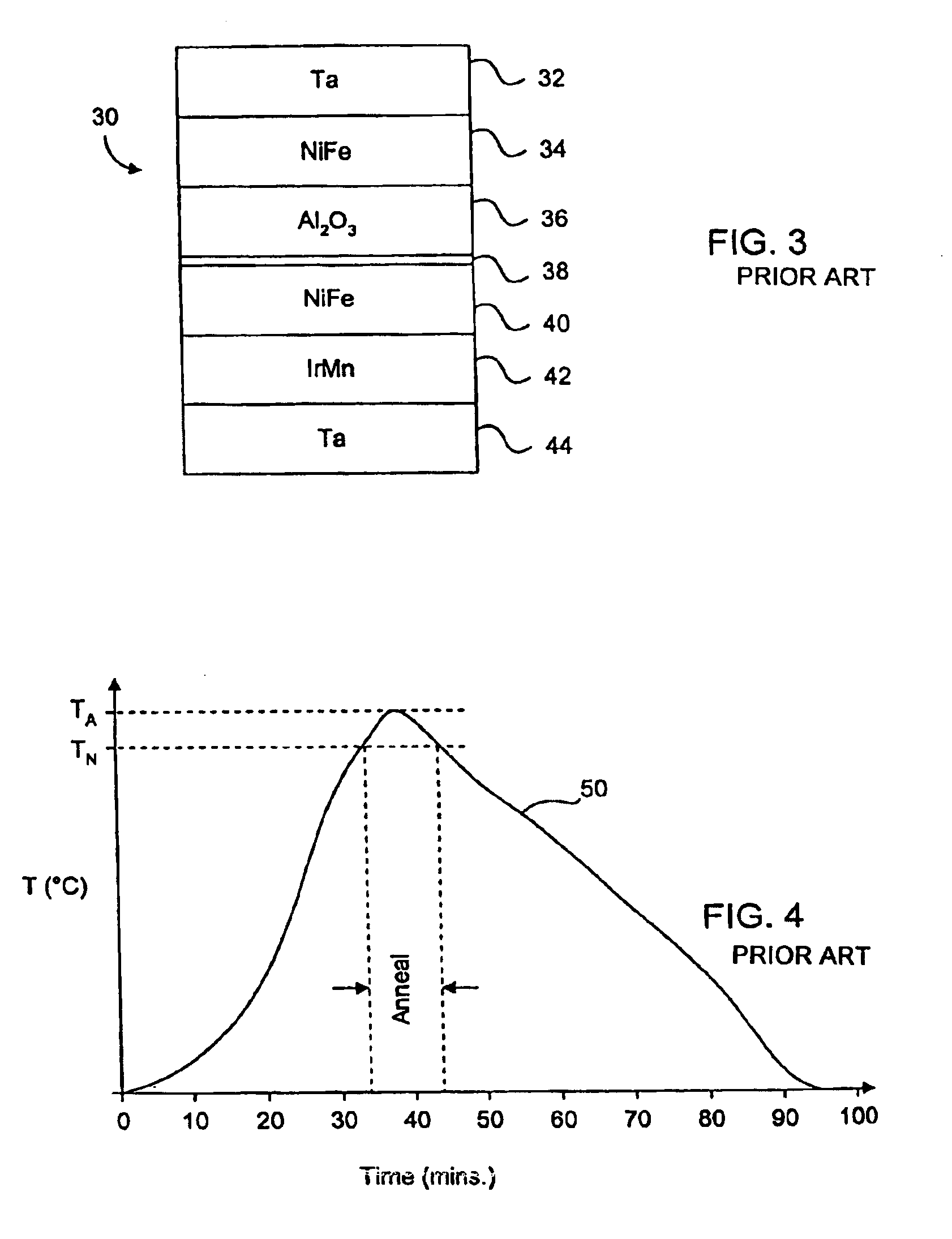Single substrate annealing of magnetoresistive structure
a single substrate and magnetoresistive technology, applied in the direction of substrate/intermediate layer, spin-exchange-coupled multilayer, inductance/transformer/magnet manufacturing, etc., can solve the problems of large, bulky structure for magnetic field generation, known bulk process, etc., to improve improve the effect of pinning uniformity and process control
- Summary
- Abstract
- Description
- Claims
- Application Information
AI Technical Summary
Benefits of technology
Problems solved by technology
Method used
Image
Examples
Embodiment Construction
[0024]Referring initially to FIGS. 1 and 2, an apparatus 2 is shown for annealing wafers in a magnetic memory device fabrication process according to the present invention. Annealing apparatus 2 includes a base 4 which supports a Helmholtz coil made up of current loops 6 and 8. The ideal Helmholtz coil includes two coaxial circular current loops with the same radius, separated from each other by one radius. Alternatively, a permanent magnet, such as an alnico or ferrite magnet, for example, could be used in place of the Helmholtz coil, the magnet being positioned as necessary to provide an effective magnetic field. A pair of robotic arms 10 and 12 transports a wafer 14 from an input cassette 16 through the annealing apparatus to an output cassette 18.
[0025]As shown in FIG. 2, wafer 14 is supported on retractable pins 20 above a heated chuck 22. The chuck and associated heater are made of non-magnetic materials. Alternatively, the wafer can be heated by other methods, including radia...
PUM
| Property | Measurement | Unit |
|---|---|---|
| Néel temperature | aaaaa | aaaaa |
| Néel temperature | aaaaa | aaaaa |
| Néel temperature | aaaaa | aaaaa |
Abstract
Description
Claims
Application Information
 Login to View More
Login to View More - R&D
- Intellectual Property
- Life Sciences
- Materials
- Tech Scout
- Unparalleled Data Quality
- Higher Quality Content
- 60% Fewer Hallucinations
Browse by: Latest US Patents, China's latest patents, Technical Efficacy Thesaurus, Application Domain, Technology Topic, Popular Technical Reports.
© 2025 PatSnap. All rights reserved.Legal|Privacy policy|Modern Slavery Act Transparency Statement|Sitemap|About US| Contact US: help@patsnap.com



